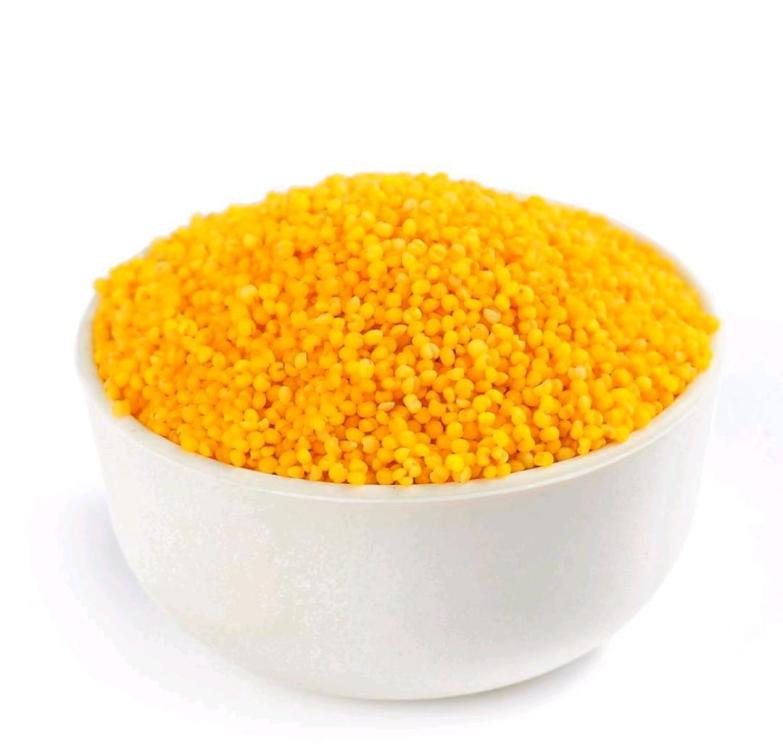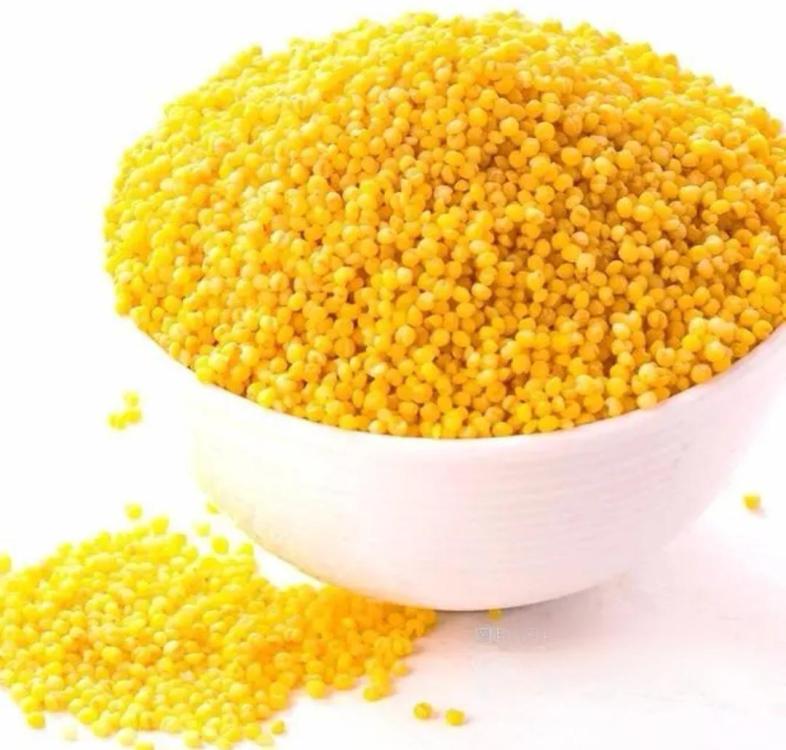The next ingredient is an ancient grain. There is archaeological evidence of it being eaten in China in Neolithic times and it was cultivated at least 7,500 years ago. It was eaten even before China stumbled across rice.
Husked but uncooked rice is 大米 (dà mǐ) in Chinese with 大 meaning 'large'. Here, I want to look at 小米 (xiǎo mǐ) with 小 meaning 'small'. These sizes are referring to the grain's relative dimensions.
Millet is a small grained grass of which there are many types. Two main types are commonly harvested in China: broomcorn millet (Paniceum miliaceum) and foxtail millet (Setaria italica), the latter being, by far, the dominant species.
Each species comes in two varieties. Besides regular millet, we also have 粘小米 (nián xiǎo mǐ), glutinous millet. Regular millet contains 20% amylose and 80% amylopectin, and glutinous millet contains 100% amylopectin which makes it sticky when cooked. Instead of cooking it, it is mainly used in the making alcoholic beverages including beer.
The regular millet is, like sorghum, mainly used in congees, either on its own or in mixed grain types.
It is also occasionally used in some baked cakes and cookies/biscuits.




